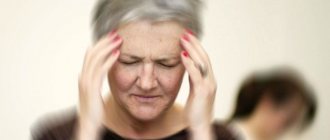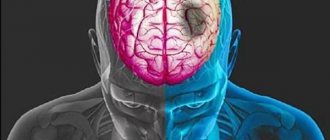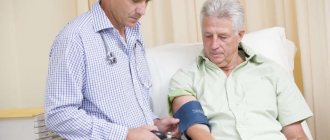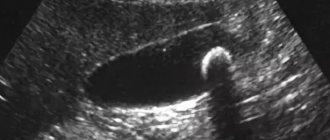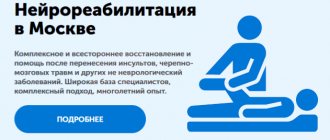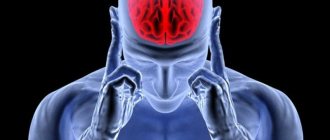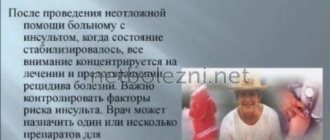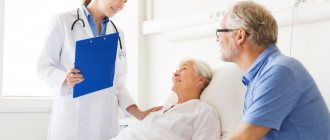Sections
Some patient stories are especially memorable. For example, this one.
At the time of his illness, Pyotr Ivanovich was 65 years old. All his life he worked as a carpenter, and recently he worked in our hospital. He repaired everything that was broken. A man with golden hands.
Like many people, he did not monitor his blood pressure, and suffered a stroke .
His left hand stopped working. For Pyotr Ivanovich it was a real disaster.
He couldn't do anything on his own: get dressed, take a shower, work with his hands.
Unfortunately, not all patients can regain the functionality of their arm, but in the case of Peter Ivanovich, rehabilitation could be very effective.
Rehabilitation after a stroke at the Almadeya Clinic
Almost every day patients come to us with the problem of increased muscle tone in the arm or leg after a stroke.
We carried out botulinum therapy, stretched the muscles, gave exercises and tasks to restore the arm.
The hand recovered best when Pyotr Ivanovich received his working tools and performed exercises with them. The nurses walked around and were amazed at how Pyotr Ivanovich easily copes with the repairs, although he is still undergoing a rehabilitation course.
We managed to restore his hand and Pyotr Ivanovich remained to work in the hospital.
This story shows that spasticity can be managed through movement and drug therapy. Using familiar activities can help restore activity to your sore arm.
Rehabilitation Center "Trust"
Narrated by the Head of the Center for the Development of Social Support and Rehabilitation Technologies “Trust”. Neurologist. Specialist in medical rehabilitation, Alexander Nikolaevich Komarov:
— Our center is creating a laboratory for the correction of spasticity in patients with central nervous system lesions.
Spasticity - in the broadest sense of the term, means a complication of damage to the brain or spinal cord, which seriously limits the rehabilitation potential and recovery possibilities for such patients. Plus, this brings with it a lot of complications: contracture, arthrosis, ossification, pain, movement disorders. This is a very serious problem that we face almost constantly, for example, even in order for us to start doing exercise therapy with a patient, we have to “relax” him for a long time, remove this stiffness, “clamp” and constriction...
What do we have today to solve the problem? Various, sometimes quite expensive, techniques are used, which are not always successful and also have contraindications.
The task is to correct this patient’s condition once and for all – or at least for a long time.
Now two ways are practiced - local and central treatment of spasticity; central - this is mainly medicinal, but there are also contraindications and side effects: muscle weakness, stool disorders, stomach and intestinal diseases, etc.
In addition, there is also a purely psychological point: it’s not very healthy when a person has to literally take handfuls of different pills...
But there is another way - baclofen pumps, which are implanted under the patient’s skin, like stimulants, their action is local, precisely and strictly dosed, “like in a pharmacy”, does not have a systemic effect, but is directed precisely to the target.
This is the most promising method; the operation is simple, similar to the type and principle of pacemaker placement, and can be performed on an outpatient basis. Of course, to carry it out, a conclusion from a neurosurgeon is necessary, who tests the patient, finds out how suitable this equipment is for him, and gives the go-ahead for implantation.
And then, throughout life, a person is freed from this difficult problem; by relieving spasticity, we solve many other problems; There are cases when patients, after implantation of a baclofen pump, begin to walk, although they previously experienced serious difficulties with movement - precisely because the entire rehabilitation process for such a patient becomes more effective and successful!
Another modern way and method of solving the problem is neuromodulation; Here, a special device is also implanted under a person’s skin, emitting electrical impulses of a certain frequency. There are different types of neuromodulators - to relieve spasticity, to eliminate chronic pain syndrome, to correct bladder function, etc.
The advantages of these methods are obvious: a person no longer has to constantly spend money on expensive medications, the number of side effects and complications decreases, and, as I already said, the rehabilitation potential increases.
Since these operations belong to the category of high-tech medical care, the question of the need and possibility of such implantations is decided on a case-by-case basis: specialists must assess the level and size of the damage, the overall clinical picture, etc.
And today we can offer this modern and high-tech treatment method to the patients of our center; during the rehabilitation process, our specialists will conduct the necessary testing and give a referral to a specialized clinic.
I would also like to add that, according to the most general estimates, at least a third of our clients need - and can receive - such help, including patients with cerebral palsy, and those who have suffered a stroke, and other diseases of the nervous system.
Spasticity after stroke: features and rehabilitation
Not everyone experiences spasticity after a stroke. But, if a muscle is in spasm all the time, it can shorten. If the muscles of the injured arm or leg are not stretched, pain will begin over time. Contracture may develop - the muscle will shorten and the limb cannot be straightened without surgery.
How to avoid complications:
1. You should stretch muscles that have increased tone.
- You should stretch very carefully, slowly and gradually.
- The patient should not experience pain.
- Stretching is done several times a day, every day.
- Stretching can be done by the patient himself or by an assistant.
2. For spasticity, medications are used for treatment - botulinum therapy.
- It is very effective in reducing muscle tone and is safe.
- Botulinum therapy is successfully used in all countries with developed medicine.
- Botulinum therapy is carried out by additionally trained doctors. They give injections to those muscles that have high muscle tone.
- The effect does not occur immediately, but within several weeks, and lasts for an average of 3 months.
- If the patient's spasticity is severe, then botulinum therapy should be carried out 2-4 times a year.
- Botulinum therapy can be used to reduce tone, relieve pain and limited mobility. It can also help restore movement
These drugs are quite expensive, but they can be obtained free of charge through the state program if the patient has a disability group.
After 2 weeks of botulinum injections, the patient’s muscle tone decreases and a “rehabilitation window” opens.
At this time, rehabilitation will be very effective.
The secret is that the better the patient moves his arm or leg, the less muscle tone. You can get rid of spasticity through proper use of the affected arm for dressing, preparing and eating food, washing the body, and also when walking.
Therefore, in rehabilitation it is important to combine botulinum therapy with non-drug therapy:
- physical therapy
- classes with a speech therapist
- occupational therapist
- psychologist
- rehabilitation nurse
In some cases, after a series of botulinum injections and rehabilitation courses, the patient manages to get rid of spasticity completely.
Pyotr Ivanovich had just such a case. He managed to regain hand function using botulinum therapy and rehabilitation. Good interaction between specialists, doctors, psychologists, occupational therapists and physical therapists allows you not to waste time and effectively plan rehabilitation after botulinum therapy.
Write to us what difficulty you encountered, and we will suggest further steps for rehabilitation or provide the missing information.
Management of stroke patients with spasticity
The article discusses the prevention of recurrent stroke and the management of patients with post-stroke spasticity. It is noted that comprehensive secondary prevention of ischemic stroke (non-drug methods, drug therapy and surgery) can significantly reduce the risk of recurrent stroke and other cardiovascular diseases. The effectiveness of therapeutic exercises, muscle relaxants and botulinum toxin preparations in the management of patients with post-stroke spasticity is discussed. It is emphasized that the introduction into clinical practice of modern methods of preventing stroke and treating the consequences of stroke will significantly reduce mortality from stroke, speed up recovery and improve the quality of life of patients.
Introduction
There are over a million people in Russia who have suffered a stroke. More than half of them have motor disorders (most often spastic paresis of the limbs), as a result of which persistent disability often develops and the quality of life is significantly reduced [1, 2].
Management of patients with a history of stroke is aimed at preventing recurrent stroke and other cardiovascular diseases, preventing possible complications, reducing existing impairments and maximizing functional abilities [1–3].
Early mobilization of a stroke patient reduces the risk of developing thrombosis of the veins of the lower extremities, the formation of bedsores, aspiration and pneumonia, the formation of contractures and has a beneficial effect on the psychological state of the patient. Constant physical activity is necessary to maintain a good functional state of motor functions. Regular walking and physical activity make it possible to firmly consolidate the positive results obtained during the rehabilitation of the patient in the early post-stroke period. Increasing the intensity of physical activity underlies the activation of patients with movement disorders, while great importance is attached to the treatment of spasticity, which is present in the majority of such patients.
Prevention of recurrent stroke
The risk of stroke is almost ten times higher in people who have had a stroke and transient ischemic attack, and it is greatest in the early stages of illness. In this regard, secondary prevention should begin as early as possible and be carried out throughout life [3, 4]. Stroke prevention includes non-drug and drug methods, and in some cases surgery.
Non-drug methods
Quitting smoking or reducing the number of cigarettes smoked is accompanied by a gradual significant reduction in the risk of ischemic stroke. To prevent one recurrent ischemic stroke, it is enough for four patients with a history of ischemic stroke or transient ischemic attack to quit smoking.
Stopping alcohol abuse reduces the risk of developing recurrent hemorrhagic and ischemic stroke in former alcoholics. All stroke patients are advised to abstain from alcohol.
Regular physical activity is recommended for stroke patients. You should refrain from significant physical activity, especially during the first month of the disease, however, a gradual increase in loads and regular walks in the fresh air are not contraindicated. The positive effect of systematic physical activity may be due to normalization of body weight and blood pressure, increased glucose tolerance, and a decrease in serum cholesterol.
In addition, stroke patients are advised to reduce excess weight by eating a balanced diet, limiting caloric intake and increasing physical activity.
Drug prevention
Antihypertensive therapy
. Most patients who have suffered hemorrhagic and ischemic stroke or transient ischemic attack require antihypertensive drugs. About a third of recurrent strokes can be prevented by gradually normalizing blood pressure.
A reduction in the incidence of ischemic stroke has been established when using diuretics, angiotensin-converting enzyme inhibitors, or a combination of angiotensin-converting enzyme inhibitors with a diuretic as antihypertensive agents, but it has not been confirmed for beta-blockers.
The target blood pressure level is selected individually. It is recommended to reduce the pressure gradually, by an average of 10/5 mmHg. Art. After an ischemic stroke, blood pressure should be at least 120/80 mmHg. Art. [3, 4]. In patients who have had an ischemic stroke or transient ischemic attack, the risk of recurrent stroke increases with systolic blood pressure
The choice of a specific antihypertensive drug in a patient who has suffered a stroke is largely determined by concomitant diseases (diabetes mellitus, coronary heart disease, etc.), and a combination of several antihypertensive drugs is often required.
For noncardioembolic stroke (atherothrombotic, lacunar, and stroke of unknown cause), antiplatelet agents are recommended as antithrombotic therapy; for cardioembolic stroke, anticoagulants are recommended.
Antiplatelet agents.
Therapy with antiplatelet drugs (mainly aspirin) begins on the first day of ischemic stroke. Although timing has not been well studied, it is best to administer anticoagulants immediately after a transient ischemic attack and within 14 days of the ischemic stroke. However, in case of uncontrolled arterial hypertension or a large heart attack (with its probable hemorrhagic transformation), the course of treatment can be carried out later.
Among the antiplatelet agents, the most commonly used are acetylsalicylic acid (aspirin), clopidogrel, ticlopidine, a combination preparation of acetylsalicylic acid and dipyridamole.
Regular use of aspirin reduces the risk of non-fatal stroke by 28% and fatal stroke by 16%, and the risk of various vascular events (stroke, myocardial infarction, vascular death) by an average of 13% [6]. To prevent recurrent ischemic stroke, it is recommended to take aspirin in a dose of 75 to 325 mg/day; aspirin in higher doses does not enhance the preventive effect, but increases the risk of gastrointestinal disorders and bleeding [6].
The regimen for taking ticlopidine (Ticlid), a thienopyridine derivative, is 250 mg twice a day. In approximately 2% of cases, neutropenia may develop, which requires regular monitoring of a complete blood count (every two weeks during the first three months of treatment) and in case of a positive result, discontinuation of the drug.
Clopidogrel (Plavix, Plagril) is a thienopyridine derivative chemically similar to ticlopidine, but causes fewer side effects. In this regard, European experts recommend using only clopidogrel among thienopyridines to prevent recurrent ischemic stroke [3]. Clopidogrel is prescribed at a dose of 75 mg once daily. It, to a greater extent than aspirin, reduces the risk of recurrent stroke, especially in patients with multifocal manifestations of atherosclerosis (damage to the peripheral arteries of the lower extremities, coronary heart disease). In recent years, in patients with a history of minor stroke or transient ischemic attack, the use of a combination of clopidogrel (75 mg/day) and aspirin (50–100 mg/day) for 6–12 months, followed by a transition to taking aspirin only or clopidogrel only, has been discussed. [7].
Dipyridamole sustained release (200 mg) in combination with acetylsalicylic acid (25 mg) (Agrenox) for secondary prevention of ischemic stroke is taken twice a day. This combination has a slight advantage over acetylsalicylic acid monotherapy in reducing the risk of recurrent ischemic stroke.
Anticoagulants.
Among the anticoagulants, warfarin is most often used, which is recommended for the secondary prevention of ischemic stroke in patients with atrial fibrillation, intraventricular thrombus, artificial heart valve and other pathologies that are dangerous for the recurrence of cardioembolic ischemic stroke. In this group of patients, warfarin reduces the risk of recurrent stroke and systemic embolism more than aspirin. The dose of warfarin (on average 2.5–10 mg/day) is selected gradually, focusing on the international normalized ratio, maintaining it at a level of 2–3.
Over the past ten years, the results of multicenter randomized studies have been published in which the effectiveness of new oral anticoagulants - apixaban [8], dabigatran [9], rivaroxaban [10], edoxaban [11] - in comparison with warfarin was studied in patients with atrial fibrillation. A significant proportion of patients included in these studies had previously suffered an ischemic stroke or transient ischemic attack and were therefore taking anticoagulants for secondary prevention of a cardiovascular event. These studies showed that the new oral anticoagulants are as effective as warfarin in preventing ischemic stroke and other arterial embolisms, with the advantage of a lower risk of bleeding, especially intracranial [8–11]. Based on the results of these studies, in most countries of the world, including our country, for non-valvular atrial fibrillation, dabigatran (Pradaxa) 150 or 110 mg twice daily, rivaroxaban (Xarelto) 20 mg/day and apixaban (Eliquis) were recommended for use. 5 mg twice a day.
Statins.
Taking statins is recommended for patients who have suffered non-cardioembolic ischemic stroke or transient ischemic attack [3, 4, 7]. The prescription of statins for ischemic stroke caused by cardiac embolism or unclear causes is indicated in the case of concomitant ischemic heart disease, diabetes mellitus, and high levels of low-density lipoprotein cholesterol in the blood serum. Atorvastatin (Liprimar) is used at 20–80 mg/day, simvastatin (Zocor) at 20–40 mg/day to achieve low-density lipoprotein cholesterol levels of 2.5 mmol/L or lower. The use of statins in higher doses than standard doses, for example atorvastatin 80 mg instead of 20 mg, may lead to an additional reduction in the risk of stroke, which is especially important in patients at high risk of developing recurrent ischemic stroke.
Surgical intervention
Carotid endarterectomy is recommended for severe stenosis (narrowing of 70–99% of the diameter) of the internal carotid artery on the side of the affected hemisphere in the early stages (preferably in the first two weeks), but no later than six months from the moment of ischemic stroke or transient ischemic attack [3, 4, 7]. Carotid endarterectomy can also be used for moderate stenosis (narrowing of 50–69% of the diameter) of the internal carotid artery in the presence of additional risk factors for stroke (for example, male gender) and the absence of significant concomitant diseases. Carotid endarterectomy should be performed by experienced surgeons whose perioperative morbidity and mortality do not exceed 6%. The effectiveness of carotid endarterectomy depends on the timing of the operation [12]. It is most effective in the early stages (in the first month after an ischemic stroke or transient ischemic attack). With increasing time from the moment of ischemic stroke or transient ischemic attack, the effectiveness of carotid endarterectomy sharply decreases.
Carotid stenting has no advantages over carotid endarterectomy in patients who have suffered an ischemic stroke or transient ischemic attack and have stenosis of the internal carotid artery [3, 4, 7]. When stenting the carotid arteries, the best results are observed in cases where a device (trap) is used to prevent possible arterio-arterial embolism. Carotid stenting should be performed by experienced surgeons whose perioperative morbidity and mortality do not exceed 4%.
The effectiveness of secondary prevention of ischemic stroke increases significantly when all possible means are used. The combination of several means of secondary prevention of ischemic stroke can significantly reduce the risk of developing recurrent stroke and other cardiovascular diseases.
Treatment of spasticity
Spasticity is observed in 65% of patients with motor disorders after a stroke [13, 14]. It usually grows in paretic limbs over several weeks and months after the stroke. A spontaneous decrease in spasticity is observed relatively rarely, most often with the restoration of motor functions [14]. In many patients with hemiparesis or monoparesis, spasticity impairs motor function because increased muscle tone can increase muscle weakness. In addition, spasticity contributes to the development of contracture and deformation of the limb, makes it difficult to care for an immobilized patient and is sometimes accompanied by painful muscle spasms [14].
Lost motor functions are restored as quickly as possible within two to three months from the moment of the stroke, after which the rate of recovery decreases significantly. One year after the stroke, the likelihood of a decrease in the degree of paresis is very small. However, it is possible to improve motor functions by training balance and walking, using special mobility aids and devices that correct increased muscle tone in paretic limbs.
With severe spasticity, the functional activity of the limb is on average worse than in patients with mild spasticity [14]. However, with a pronounced degree of paresis, spasticity in the leg muscles can make standing and walking easier, and a decrease in muscle tone can lead to a deterioration in motor function. In addition, with minimal movement of the limb, patients may not experience improvement in motor function after reduction in spasticity. This justifies the need for treatment only in cases where spasticity impairs the patient’s motor functions, complicates his care, or causes his discomfort.
Treatment of post-stroke spasticity is aimed at improving the functionality of paretic limbs. Unfortunately, its results are usually limited to reducing pain and discomfort associated with high muscle tone, facilitating the care of a paralyzed patient, or eliminating an existing cosmetic defect caused by spasticity.
Before starting treatment for a patient with post-stroke spasticity, it is necessary to determine achievable goals in each specific case (improving motor functions, relieving painful spasms, facilitating patient care, etc.) and discuss them with the patient and (or) his relatives [14, 15 ]. If you start therapy early after the stroke that caused spastic paresis, you can achieve good results. This is due to the fact that treatment can lead to a significant improvement in motor functions, preventing the formation of contractures and increasing the effectiveness of rehabilitation during the period of maximum plasticity of the central nervous system. With a long duration of the disease, the chance to significantly improve motor functions is small, but it is possible to significantly facilitate patient care and eliminate the discomfort caused by spasticity. The less severe the paresis in a limb, the higher the likelihood that therapy will improve motor functions [14, 15].
Non-drug methods
Therapeutic gymnastics (the basis of physiotherapy), due to the training of paretic limbs and the prevention of contractures, is considered the most effective method for post-stroke spastic hemiparesis. Physiotherapy methods include positioning treatment, teaching patients to stand, sit, walk (with the help of additional means and independently), limb bandaging, orthopedic devices, thermal effects on spastic muscles, as well as electrical stimulation of certain muscle groups, such as extensors of the fingers or anterior tibialis muscle [16].
Patients with severe spasticity in the flexors of the upper limbs are not recommended to undergo intense exercises that can significantly increase muscle tone: squeezing a rubber ring or ball, training with an expander to develop flexion movements in the elbow joint.
Massage of the muscles of paretic limbs that have high tone is possible only in the form of light stroking. In antagonist muscles, on the contrary, you can use rubbing and shallow kneading at a faster pace.
In domestic practice, patients with post-stroke spastic hemiparesis are often prescribed acupuncture as part of complex treatment. Controlled studies conducted abroad do not show reliable effectiveness of this method [17]. However, according to the latest meta-analysis conducted by Korean specialists, acupuncture can reduce spasticity and even improve the functional state of paretic limbs [18].
Muscle relaxants
Tizanidine, baclofen, dantrolene (dantrolene) and benzodiazepines (mainly diazepam) are recommended as medications taken orally for the treatment of spasticity of various origins. The basis for the prescription of these antispastic drugs (or muscle relaxants) are the results of double-blind, placebo-controlled randomized studies that showed the safety and effectiveness of these drugs [14, 15]. Note that dantrolene (dantrolene) is not registered as a medicine in Russia. In domestic clinical practice, tolperisone is used, which is available in some countries, but is not registered in the USA and many other countries.
Antispastic agents, by reducing muscle tone, can improve motor functions, relieve painful muscle spasms, enhance the effect of physical therapy and, as a result, prevent the development of contractures and facilitate care for an immobilized patient. With mild spasticity, muscle relaxant therapy can lead to a significant positive effect, but with severe spasticity, large doses of muscle relaxants may be required, which are often accompanied by the development of adverse events. Treatment with muscle relaxants begins with a minimum dose, which is then slowly increased to achieve effect.
Baclofen (Baklosan)
has an antispastic effect mainly at the spinal level. The drug is an analogue of gamma-aminobutyric acid (GABA). It binds to presynaptic GABA receptors, reducing the release of excitatory amino acids (glutamate, aspartate) and suppressing mono- and polysynaptic activity at the spinal level, which causes a decrease in spasticity. The drug also has a moderate central analgesic effect. It is well absorbed from the gastrointestinal tract, the maximum concentration in the blood is reached two to three hours after administration. Baclofen is used for spinal spasticity (spinal injury, multiple sclerosis), and less commonly for post-stroke or other cerebral spasticity. It is effective for painful muscle spasms. The initial dose is 5–15 mg/day (in one or three doses), then it is increased by 5 mg every day until the desired effect is obtained, the drug is taken with meals. The maximum dose of baclofen for adults is 60–75 mg/day. In patients who have suffered a stroke and have spastic hemiparesis or paresis of an arm or leg, the use of baclofen is limited due to side effects that occur during the treatment period. Typically, these are drowsiness and muscle weakness, which can lead to deterioration in motor function and even falls. Sometimes nausea, constipation, diarrhea, and arterial hypotension occur. Caution is required when prescribing the drug to elderly patients.
Baclofen can be administered intrathecally using a special pump for spinal spasticity caused by previous spinal injury or multiple sclerosis. There is positive experience with the use of baclofen intrathecally and for post-stroke spasticity [23]. In our country, this method is rarely used in patients who have suffered a stroke, largely due to its high cost.
Tizanidine (Sirdalud)
– centrally acting muscle relaxant, alpha-2-adrenergic receptor agonist. The drug reduces spasticity by suppressing polysynaptic reflexes at the level of the spinal cord. This may be a consequence of inhibition of the release of excitatory amino acids and activation of glycine, which suppresses the excitability of spinal cord interneurons. Sirdalud also has a moderate central analgesic effect. There is evidence that tizanidine inhibits the release of substance P from small sensory afferent fibers, which helps to reduce muscle tone of the flexors and extensors, as well as reduce painful muscle spasms. Sirdalud is effective for cerebral and spinal spasticity, as well as for painful muscle spasms. When taken orally, the maximum concentration of tizanidine in the blood is reached within an hour; food intake does not affect its pharmacokinetics. The initial dose of the drug is 2–6 mg/day in one or three doses, the average therapeutic dose is 12–24 mg/day, the maximum dose is 36 mg/day. Side effects may include drowsiness, dry mouth, dizziness and a slight decrease in blood pressure.
The effectiveness of tizanidine (Sirdalud) in patients with post-stroke spasticity was convincingly demonstrated in a randomized controlled trial in patients who had suffered a stroke more than six months ago and had severe spasticity [19]. Treatment was started with 2 mg at night, then the dose was increased every seven days by 2 mg to 16 mg/day in three divided doses, then the dose was increased by 2 mg every three to four days, trying to achieve a dose of 36 mg/day in three divided doses. If the patient did not tolerate the increase in dose due to side effects, then he was left at the same dose for another week, and then the increase was continued. The results of the study showed a significant decrease in spasticity during treatment; by the 16th week it decreased by 2.80 ± 0.47 points on the Ashworth scale (p
Currently, the widely used form of tizanidine is in the form of 6 or 12 mg modified-release capsules (Sirdalud MR). Comparative studies of Sirdalud MR with modified release and regular Sirdalud in patients with spasticity of various origins showed similar clinical efficacy of these forms [20]. Thanks to the sustained release, it is possible to take the drug once a day, which provides a significant advantage as it increases patient adherence to treatment.
A comparative study of baclofen and tizanidine shows some advantage of tizanidine (Sirdalud) both in terms of the severity of the antispastic effect and in fewer side effects [21, 22].
An analysis of 20 studies comparing the effectiveness of various antispastic drugs in a variety of neurological diseases accompanied by spasticity showed that tizanidine, baclofen and diazepam are able to reduce spasticity to approximately the same extent, but tizanidine (Sirdalud) is more effective than other antispastic drugs in reducing clonus [22] . Unlike baclofen, tizanidine (Sirdalud) does not cause a weakening of muscle strength, it is better tolerated by patients than baclofen and diazepam, and side effects associated with its use are less likely to cause discontinuation of treatment [22].
Tolperisone hydrochloride (Mydocalm)
has a predominantly central muscle relaxant effect. The decrease in spasticity when taking the drug is associated with an inhibitory effect on the caudal part of the reticular pharmacy, suppression of spinal reflex activity, and central H-anticholinergic properties. The drug has a moderate central analgesic effect and a slight vasodilator effect. Therapy with tolperisone hydrochloride begins with 150 mg/day in one or three doses and gradually increases the dose (in adults, usually up to 300–450 mg/day) until the effect is obtained. Tolperisone hydrochloride is used to treat both cerebral and spinal spasticity and to reduce painful muscle spasms. May cause side effects (drowsiness, muscle weakness, hypotension).
Botulinum toxin
In patients who have had a stroke and have local spasticity in paretic muscles, botulinum toxin type A, or botulinum toxin (Botox, Dysport, Xeomin) can be used [23]. Botulinum toxin is indicated if a stroke patient has a muscle with increased tone without contracture, and pain, muscle spasms, decreased range of motion and impaired motor function associated with spasticity of this muscle [14, 15, 23]. The effect of botulinum toxin when administered intramuscularly is caused by blocking neuromuscular transmission due to suppression of the release of the neurotransmitter acetylcholine into the synaptic cleft.
The clinical effect after an injection of botulinum toxin is observed after a few days and lasts for two to six months, after which a second injection may be required. Treatment results are higher when botulinum toxin is administered in the early stages (up to a year) from the moment of illness and with mild paresis of the limb.
Placebo-controlled studies have shown significant effectiveness of botulinum toxin in patients with post-stroke spasticity in the hand [24]. In the BEST trial, 273 patients with post-stroke spasticity were randomized to receive botulinum toxin type A or placebo plus standard care [25]. It was found that in the botulinum toxin type A group, spasticity decreased significantly more often than in the placebo group and basic self-care skills (washing, dressing, eating, etc.) were restored. A positive effect was also noted in another study, which included 463 patients who had suffered a stroke and had arm spasticity [26].
The optimal timing of botulinum toxin administration for post-stroke spasticity appears to be 2–12 months from the onset of illness. During this period, motor functions are most likely to be restored and a new movement pattern will be formed, caused by the loss of a number of motor functions. However, it is possible to obtain results from the use of botulinum toxin even later from the moment of illness. Treatment of patients with post-stroke hemiparesis with botulinum toxin in some cases can not only significantly reduce spasticity, but also improve the quality of life of patients. It should be noted that the use of botulinum toxin in patients who have suffered a stroke should always be combined with physiotherapy (therapeutic exercises) and social adaptation.
Conclusion
Management of patients who have suffered a stroke is a pressing medical and social problem. The introduction into clinical practice of modern methods of preventing stroke and treating the consequences of stroke will significantly reduce mortality from stroke, speed up recovery and improve the quality of life of patients.
zabotta.ru
There is no doubt that stroke affects each person's health differently. Some may make a full recovery, while others may remain limited in their activities, but in any case, recovery is necessary after a stroke. The correct approach to this situation is the key to a speedy recovery.
First, you need to prepare a person who has suffered a stroke for the fact that if movements have not been restored due to a stroke, then they will have to learn to do everyday work and adapt to the loss of some capabilities. Moreover, patience, help and perseverance are the best helpers in this . Over time, excellent results can be achieved; the patient can not only learn to control his movements again, but also achieve complete independence.
Now let's move on to developing movements. Of course, the patient can do something, but not everything that is necessary. You should start with the fact that feasible movements should be done as often as possible . For example, the patient can walk, even if little by little and slowly. It is necessary to make his movements as frequent as possible, first with support, then he should begin to rely less and less on his assistant, eventually he will begin to walk independently. At first there will be pain due to muscle stiffness, but you need to do it! It is better to start with a feasible number of steps, for example, fifty, add one or two per day; if walking is not possible, you can crawl around the apartment, increasing the distance every day. In both cases, of course, you need physical help and moral support.
It is necessary that the patient is very determined and that training occurs regularly, as often as possible.
During training, arms and legs must be considered together, since the body’s recovery must occur as a whole. What is important here is a combination of different exercises for different limbs. It is a mistake to think that the leg is developed first, and the arm can be worked on later.
It is always worth remembering that losing even a few days during rehabilitation may result in greater losses in the future. If only a leg or arm develops, the result may be a curvature of the spine.
After an initial analysis of possible movements, specialists will give recommendations on how to master further techniques, after which the patient will be able to sit and stand. Next, you will need outside support for movement. We must not forget about massage .
It plays a very important role during the recovery period. The duration of the course can range from one to three months, and sessions can be conducted at home, with the help of a nurse or a relative. You can learn the technique of massage from specialists, but in any case it should be done every day.
In addition to massage, paralyzed limbs need to be constantly stretched and trained with various exercises, all this is done with an assistant. Often, during warm-ups, pain appears, but you still need to stretch your muscles, overcoming it. After some time, the pain will disappear, which means the recovery process is proceeding as expected. If the pain is not overcome, the limbs may never recover.
Here it should also be taken into account that the patient’s joints are very weak, so it is easy to get a sprain. When developing arms and legs, everything needs to be done smoothly, gradually and carefully to avoid stretching.
Restoring activity should always begin with activating the work of the fingers, since they are closely related to the work of the brain, they activate it. Finger training is the key to restoring the functioning of nerve cells in the brain.
In addition to the above, you need to carry out a course of herbal treatment , which should also be recommended by the attending physician. Moreover, complex treatment with warm-ups, massage and herbs will give much better results than choosing one of the methods.
